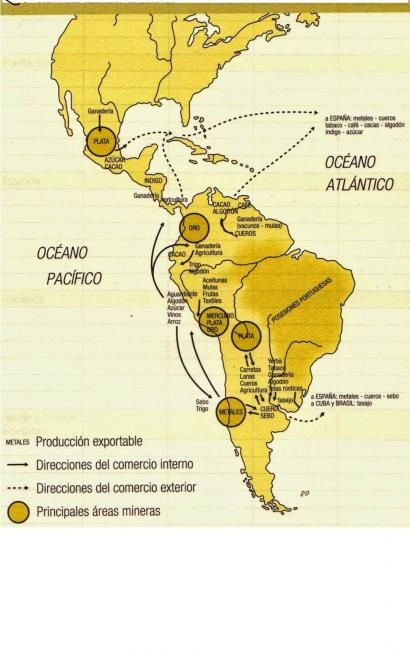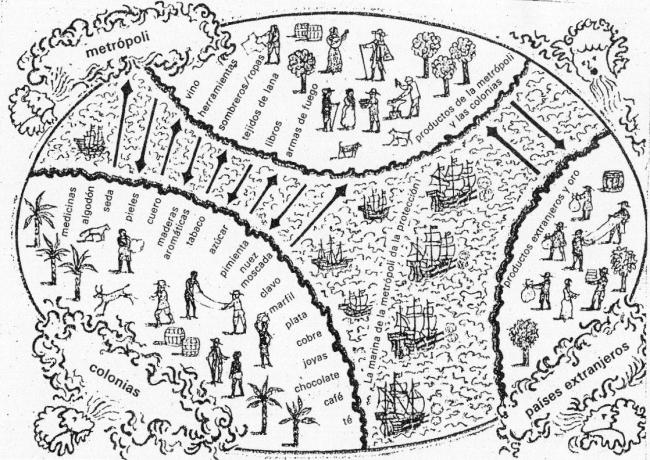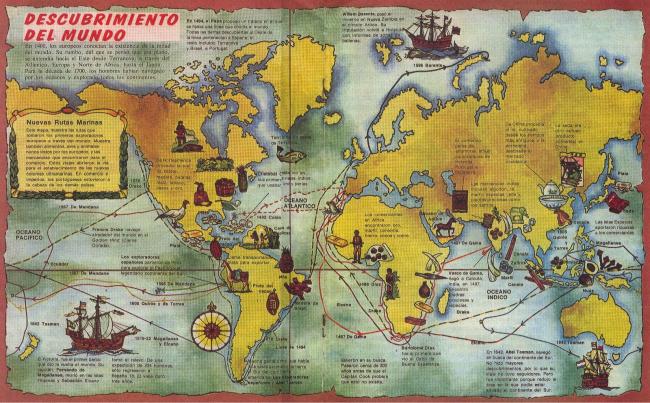The discovery of America responded to a series of specific needs of the European economy at the end of the 15th century. These included precious metals, which were necessary to cover the deficit in trade with the East, since the European goods exported (cloths, wine, oil, lead, tin) were only one eighth of the Asian goods imported (spices, drugs, silk, porcelain, lacquer, etc.). It is estimated that by the end of the fifteenth century Europe exported about 20,500 kilograms of silver per year.
The colonial economy will revolve around the following activities: mining, an activity unknown to the natives; livestock in its different species (cattle, sheep, mule); in agriculture the cultivation of sugar cane, wheat is introduced and intensifies the cultivation of native spices such as indigo, xiquilite, sarsaparilla; trade is developed in two types: the licit that paid their respective almojarifazgos and alcabalas and the illicit, where they were involved crown officials (it is nothing new)





